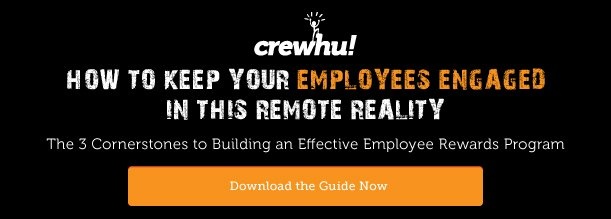Metrics That Matter: Call Metrics That Drive Customer Service and Growth

MSPs struggle to keep call teams productive, engaged, and satisfied. Tactics like gamification can do all three while connecting to your most important call metrics.
Key Takeaways
- Top KPIs and call metrics:
- CSAT
- NPS
- % answered calls (queue)
- % answered calls (direct)
- # of inbound calls
- # of outbound calls
- Response time
- Resolution time
- Gamification is the gateway to engaging workers with these metrics
MSPs have a lot to consider when trying to focus on long-term growth. It’s hard to get teams to prioritize and complete tasks in the most efficient way. This requires better time management, collaboration, accountability, and new communication tactics for our current remote work culture.
For customer service to keep improving and sales to keep growing, having the right metrics is a must. What gets measured gets improved.
So, what kind of method should you use to recognize employees and connect them to metrics? And, what are the most important call metrics that drive customer service and growth?
Comparing carrot versus stick
So, how do you start to improve employee behavior and productivity to boost call metrics? Two methods that are helpful to understand: the carrot and the stick.
The carrot method means you are incentivizing and rewarding employees when they do a great job.
The stick method, on the other hand, is when employees receive some kind of penalty if they don’t hit a goal or target.
The carrot, or reward, approach allows teams to celebrate small wins on a daily basis. It’s not about hitting the home run every day; it’s about getting on base.
If you go with more stick than carrot, you should still try to find as many ways as possible to focus on what’s going right, not just wrong. There’s always room to talk about where the issues are and where you can improve. But, if we’re only talking about where there are issues, people start to disengage from the process.
For example, as an MSP, say you’re getting a lot of feedback from clients. There are managers and team members that always focus on that one thing that’s going wrong — they don’t talk about any positives, only the negatives. What about all that great feedback?
Find a way to celebrate those small successes and positive feedback calls. Use your core values to keep people accountable instead of disciplining them.
Once a week, for example, Crewhu has a large meeting with our team. We first have a communication starter where we get to learn something about our people, and then we go into successes: “What do you think you did this week that helped our strategy going forward?”
We all know the company goals, so this gives employees the chance to say how they helped us get there. Then, everyone picks a recognition from our Slack channel that they’re not involved with to talk about with the group, and everyone has a positive attitude and brings the team together. This ritual creates a culture of “I’ve got your back.”
Remember to focus on both internal and external feedback. It shouldn’t always be coming from a manager or company owner, who probably won’t see all the great things happening between the team members. Make it social. Empower your team to recognize one another to focus on collaboration and connection with peer-to-peer recognition.
Top KPIs and call metrics
There are so many KPIs out there that you could quickly get dizzy. But which are most important to your organization? It will always depend on your issue at a given time or what you’re trying to improve.
To give you a general idea, let’s walk through seven crucial metrics for your call teams:
- CSAT
Your customer satisfaction score (CSAT) is extremely important because it tells you what you need to fix right away. It is tied to a specific interaction or employee, so you can recognize someone for doing a great job or uncover an area that needs improvement.
- NPS
Net Promoter Score (NPS) is a similar feedback metric, but it differs from the CSAT in that it shows you what someone thinks of your overall organization.
- % answered calls (queue)
This is when calls are held in a queue by an MSP. Calls need to be responded to and not ignored. When this number is high, chances are, more tickets are getting resolved and customers are going to be more satisfied.
- % answered calls (direct)
Similarly, are direct calls actually being answered? It’s crucial to have team members in charge of direct calls for better interactions.
- # of inbound calls
What is the number of total inbound calls and how are they distributed? This is a helpful number to be aware of so you can see how to properly assign tasks to certain roles for adequate coverage.
- # of outbound calls
This metric is crucial so issues with stagnant tickets can be uncovered immediately. How many calls is the team actually making? If it’s low, it may mean that tickets aren’t getting the attention they should. The number could be assigned to a team or the whole company.
- Response time
Response time is a key call metric because MSPs have SLAs they have to abide by, so they must make sure they’re following those terms carefully. It’s also important that they’re getting back to people about their tickets in a reasonable amount of time. How fast was a ticket acknowledged and assigned to someone?
- Resolution time
Track tickets that have been sitting for a certain period of time. For example, when a ticket has been open for over five days, it could be marked as “stale.” No one is taking care of the ticket or taking the time to call someone. Sometimes just one phone call can close that ticket. This is an important metric to track to make sure those issues aren’t stagnant.
Using gamification as the gateway
Gamification is an employee engagement tactic that helps the call team stay motivated. Contests are created so workers can compete and meet goals in a more exciting way.
Gamification is the easiest, most non-threatening way to get people to do what’s right for them and for the entire company. It’s the most fun way to get people to change their behavior, whether they need to do more documentation or make more calls to close tickets.
You can create a leaderboard so scores and marks are clear to everyone at all times. And, gamification actually leads to results. Sales teams in all industries are always running contests because they work. They make selling fun and challenging, and keep people focused, productive, and motivated.
Tip: Remember that recognition isn’t really a replacement for compensation. It falls into a separate budget category for employee recognition, which can be about 1% to 2% of the overall budget.
How Crewhu helps
Crewhu is a gamification platform that helps you focus on that carrot method, assigning contests to your most important call metrics. We help you recognize and reward employees, fostering a positive company culture where employees feel appreciated and valued.
To learn more, contact our team or download our recognition guide: The 3 Cornerstones of Employee Rewards.
Topics: employee recognition, Customer Service, gamification, Customer Service Metrics, carrot vs stick, call metrics







